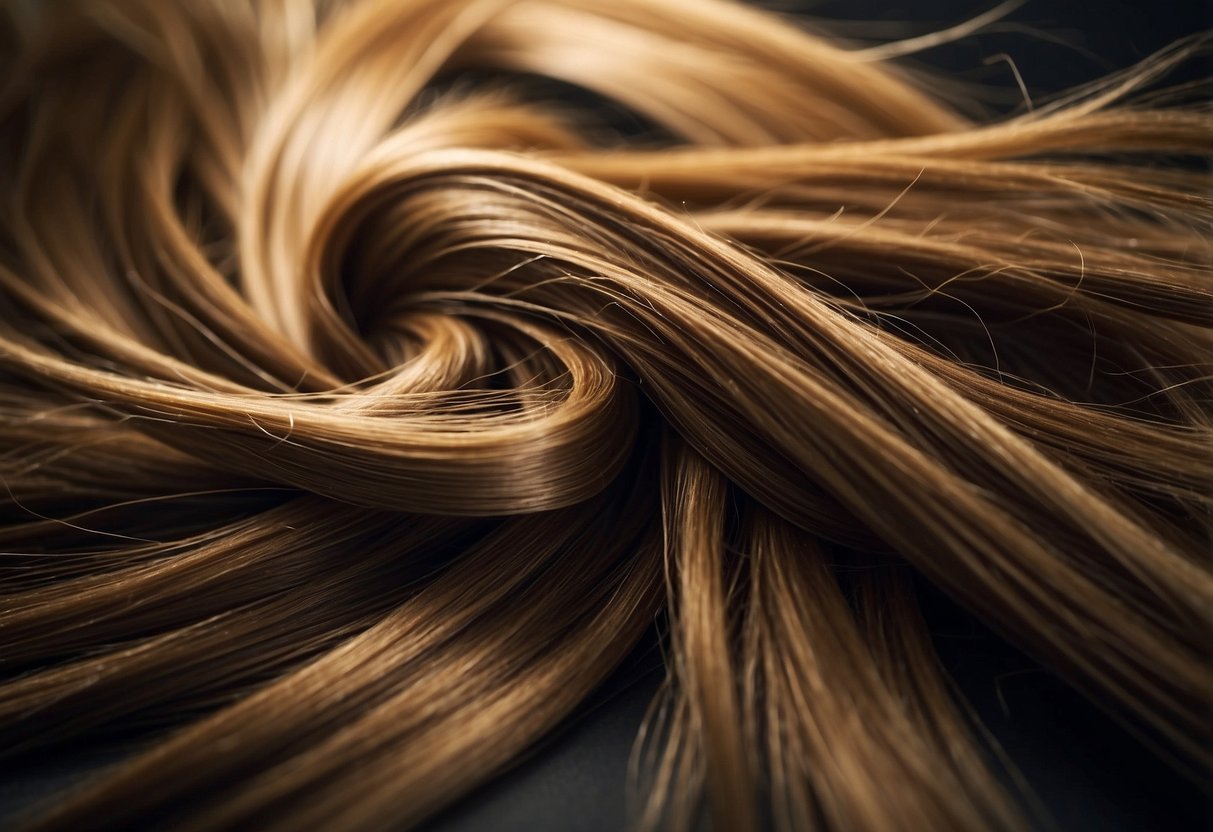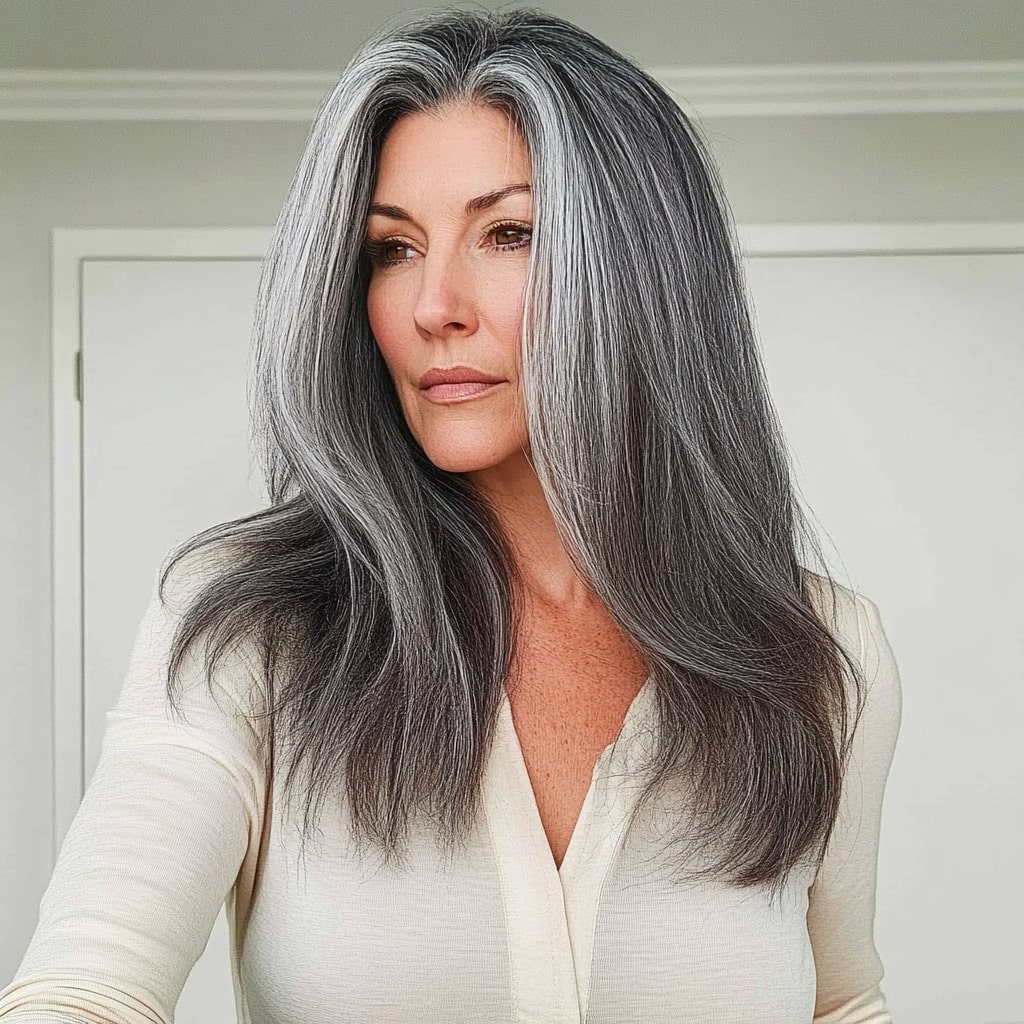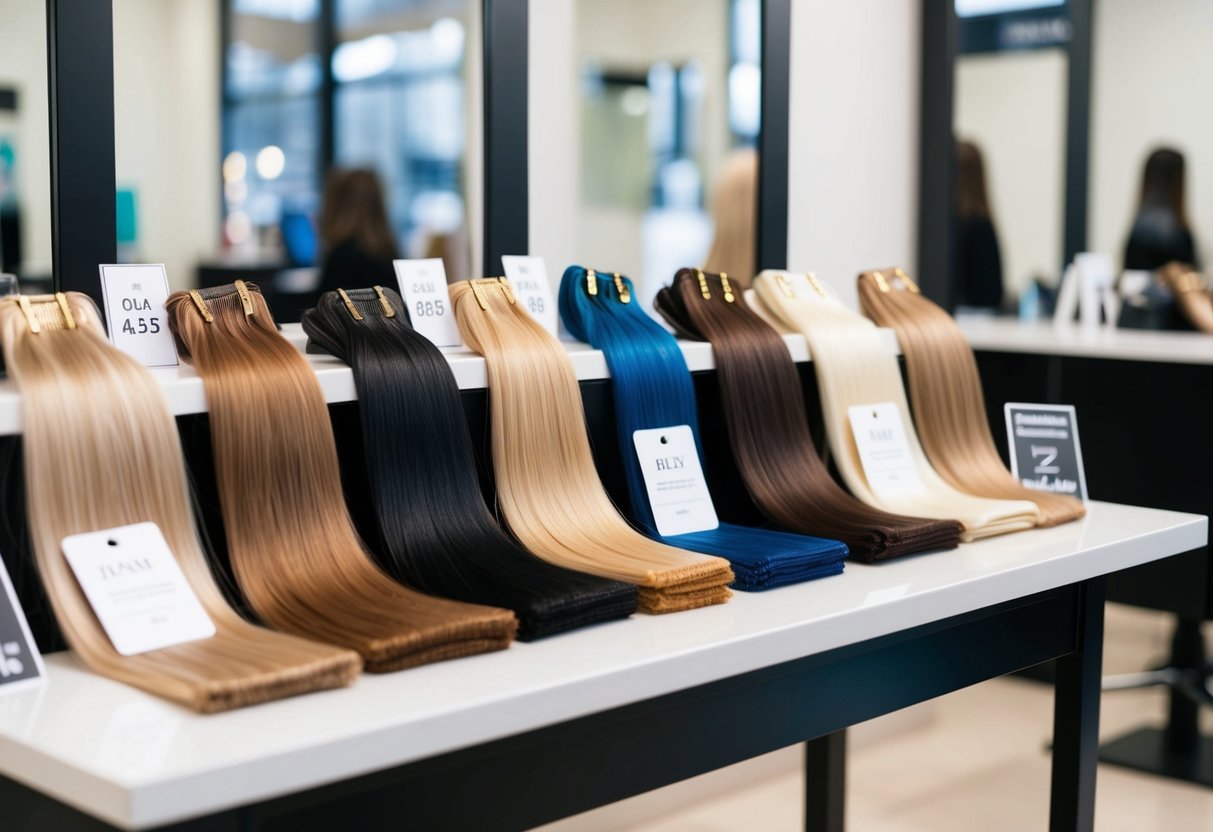Why Are My Tape-In Extensions Visible? Common Causes and Solutions

Have you noticed your tape-in extensions showing more than you’d like? This common problem can cause self-consciousness and even embarrassment, making it vital to know why it's happening and how to fix it. Understanding the main reasons behind exposed tape-in extensions can save you time, frustration, and help keep your hair looking flawless.
Two main issues could cause your extensions to show: improper application and inadequate care. If the extensions are not installed correctly, they can easily become visible. Furthermore, neglecting proper aftercare can lead to the tapes slipping or showing. By recognizing and addressing these key areas, you can keep your tape-in extensions in place and out of sight.
You'll also need to consider the quality of the extensions themselves. Poor-quality tape-ins might not blend well with your natural hair, causing them to be more noticeable. Opting for high-quality products and following a rigorous maintenance routine will let you enjoy your extensions confidently, without the fear of them becoming visible.
Key Takeaways
- Improper application can cause extensions to show
- Proper aftercare is essential for concealing extensions
- High-quality tape-ins blend better and remain hidden
Understanding Tape-In Hair Extensions
Tape-in hair extensions are popular for their natural look and ease of use. Knowing the different types, benefits, and common issues will help you make informed decisions and enjoy the best results.
Different Types of Extensions
Extensions come in various types, including clip-ins, sew-ins, and tape-ins. Tape-in extensions are notable for their thin adhesive strips that attach to your natural hair.
Unlike clip-ins, which you can remove daily, tape-ins are semi-permanent, lasting up to 8 weeks with proper care. The thin tape makes them less noticeable and more comfortable than thicker extensions.
Different brands and qualities of tape can vary. High-quality tapes prevent slipping and ensure that the extensions stay hidden. Poor-quality tapes might be more visible and less durable.
Benefits of Tape-In Extensions
Tape-in extensions offer a range of benefits. First, they provide a natural appearance. The thin strips lay flat against your scalp, blending seamlessly with your hair.
Application is fast and straightforward, taking about 30 to 60 minutes, unlike some other methods that may require hours. With proper care, tape-ins can be reused, making them more cost-effective in the long run.
Additionally, they cause less damage to your natural hair compared to other methods. They do not require harsh chemicals or heat during application, reducing potential hair damage.
Common Issues with Tape Extensions
Even with their advantages, tape-in extensions can have some problems. One common issue is tapes becoming visible. This happens if too little hair is applied over the tape or if the sections are too thick, not allowing the adhesive to hold properly.
Another issue is extensions slipping or falling out. This can be due to improper application, poor-quality tape, or an oily scalp. Ensuring that your hair is clean and dry before application is crucial.
Tape-ins can also become tangled or frizzy. Regular maintenance, including brushing and using recommended products, helps keep them in good condition. Wash and dry them gently to avoid damage to both the extensions and your natural hair.
Causes for Tape-In Extensions Showing
Tape-in extensions can sometimes become visible due to factors like how they are applied, the condition of your natural hair, and how well they are maintained. Understanding these elements can help in ensuring your extensions remain discreet.
Improper Extension Application
Incorrect application methods are a common reason why tape-in extensions show. Placing the tape too close to the scalp can result in tension and pain, making the extensions more noticeable. You should ensure there is about 1/4 to 1/2 inch of space between the tape and the scalp for a seamless look.
Sections that are too thin or thick can also lead to visibility issues. Thin sections might not hold the tape well, causing it to slip, while overly thick sections may not allow the adhesive to bond properly. Testing the placement by pulling the hair back in multiple angles helps to ensure the tape is hidden.
Natural Hair Factors
The condition of your natural hair plays a significant role in how well the extensions blend. Oily or greasy hair can affect the adhesive properties of the tape, making it more likely to slip and show. Proper washing and conditioning before application are crucial.
Fine or thin hair may require special considerations. Less dense hair necessitates placing the extensions slightly more away from the scalp to avoid visible tapes. Similarly, varying hair growth rates can impact how well the extensions stay hidden. Regular adjustments may be needed to keep them properly aligned with your natural hair growth.
Maintenance Missteps
Failure to maintain your tape-in extensions properly can lead to them showing. Using hair products with silicones can degrade the tape's adhesive over time, causing it to become loose. Stick to using recommended hair care products that do not contain such ingredients.
Regularly checking and replacing the tape, typically every 6 to 8 weeks, is also essential for maintaining the bond's integrity. Ensuring no adhesive residue remains during reapplication is vital, as any leftover residue can weaken the new tape's grip on your natural hair. Proper maintenance routines help in keeping your extensions discreet and long-lasting.
Preventative Measures for Concealing Extensions

To ensure your tape-in extensions blend seamlessly with your natural hair, you need to focus on proper application techniques, choosing suitable extensions, and maintaining them well. These steps help keep your extensions looking natural and secure.
Correct Application Techniques
Clean partings are crucial to making your extensions less visible. Ensure your hair and scalp are clean before application, as oil and dirt can prevent the tape from sticking well.
Make sure to apply the extensions evenly and with precision. Use a rat-tail comb to create straight and clean partings. This ensures the tape lies flat against your scalp, making it less likely to show.
It's also essential to press firmly on the tape to secure it properly. Using heat, such as a flat iron, can melt the adhesive slightly, creating a more secure bond.
Choosing the Right Extensions
Selecting high-quality extensions is key to achieving a natural look. Extensions made from Remy human hair with good adhesive will blend better and last longer.
Color matching is critical. You should match the extensions to your natural hair color as closely as possible. Consider consulting with a hair stylist to find the perfect match and achieve natural-looking dimension and fullness.
It’s also important to research and choose extensions that suit your hair type. For instance, lightweight extensions work better for thin hair, while thicker extensions are more suitable for denser hair.
Essential Maintenance Tips
Proper care of your extensions prevents them from becoming visible. Detangle your hair daily with a soft bristle brush. Start from the ends and work your way up to avoid pulling at the tape.
Consider sleeping with your hair in a loose braid or ponytail to minimize tangling and stress on the extensions. This not only helps with prevention of issues but keeps you comfortable.
You should also routinely check and replace the tape when necessary, typically every 6 to 8 weeks, to ensure the extensions stay secure.
By following these preventative measures, you can maintain a seamless and natural look with your tape-in extensions.
Aftercare and Maintenance of Tape-In Extensions
Proper care of tape-in extensions is essential to keep them looking good and lasting longer. Learn about the right washing methods, safe products to use, and how often to maintain them.
Proper Washing Techniques
When washing hair with tape-in extensions, use a gentle touch. Start by brushing your hair thoroughly to remove any tangles, being particularly careful around the extension bonds. This helps prevent matting and damage.
Use a sulfate-free shampoo to avoid weakening the adhesive. Apply shampoo to your scalp, massaging gently and letting the suds cleanse the extensions. Avoid scrubbing the tape area directly. Rinse thoroughly with lukewarm water.
When conditioning, apply conditioner from mid-shaft to ends. Avoid the tape area to prevent any slippage. Rinse with cool water to seal the hair cuticles.
Pat hair dry with a towel instead of rubbing it. This helps minimize friction and potential damage to the extensions. Avoid vigorous towel drying.
Safe Products to Use
Choosing the right products for tape-in extensions ensures they remain secure and in good condition. Use sulfate-free and silicone-free shampoos and conditioners. These products are gentle and less likely to degrade the adhesive tape.
Heat protectant sprays should be applied before any heat styling to prevent damage. For styling, opt for hair oils that are free from alcohol and heavy silicones. These keep the hair hydrated without compromising the tape.
Limit the use of hair sprays, mousses, and gels around the tape area. If you need to use these products, apply them sparingly and avoid the bonds. Always read the labels of hair products to ensure they’re safe for extensions.
Regular Maintenance Schedule
Regular maintenance is crucial for keeping tape-in extensions looking their best. Extensions should be repositioned or removed and re-taped every 6-8 weeks to maintain their appearance and health.
Visit your stylist for professional maintenance. They will check the condition of the tape bonds, ensure even distribution, and address any slippage or tangling. Do not attempt DIY maintenance unless you are experienced.
Daily, brush your extensions gently with a loop brush or wide-tooth comb to prevent tangling. Secure your hair in a loose braid or ponytail when sleeping or exercising to reduce friction and prevent sweat buildup, which can weaken the adhesive.
Consistent care ensures the longevity and beauty of your tape-in extensions.
Troubleshooting Common Problems
Tape-in hair extensions can occasionally show due to various issues such as slippage, falling out, and improper installation techniques. By managing these problems effectively, you can keep your extensions discreet and comfortable.
Managing Slippage and Falling Out
Slipping and falling out are common reasons your tape-in extensions might be showing. To prevent this, ensure that your hair is clean and free from oils before installation. Oils can weaken the adhesive bond, causing slippage.
Tips to avoid slippage:
- Avoid applying conditioner near the roots.
- Ensure hair is completely dry before applying tape.
- Use a high-quality tape designed specifically for extensions.
Re-taping every 6-8 weeks depending on hair growth helps maintain the bond's strength. Make sure to press and hold the tape firmly for at least 10 seconds to activate the adhesive properly.
Addressing Visibility and Comfort Issues
If your tape-in extensions are showing, it may be due to incorrect placement. Extensions should be installed an inch away from the hairline to stay hidden.
Proper placement tips:
- Leave ¼ to ½ inch space from your scalp when applying the tape. This prevents tension and pain.
- For fine or thin hair, keep even more distance to ensure the tape is well-concealed.
Test how your hair looks when pulled back to check if the tape is hidden from all angles. Ensuring tape is well-camouflaged can increase comfort and confidence in wearing your extensions.
Repairing Damage to Natural Hair
Improper installation and care can lead to damage or breakage in your natural hair. To address this, focus on gentle handling of both your extensions and natural hair.
Preventative measures:
- Use soft brushes designed for extensions to avoid tugging.
- Refrain from using heavy styling products that can weaken the tape.
If your natural hair becomes damaged or breaks, give it time to recover before reapplying extensions. Opt for high-quality extension tape to minimize damage risks and maintain a healthy bond with your natural hair.
Professional Services and Expert Advice

Getting tape-in extensions to look seamless often requires professional help. Consulting with a skilled hair stylist, knowing when to refit or replace extensions, and understanding salon services can make a significant difference.
Consulting with a Qualified Hair Stylist
A qualified hair stylist is essential for extension installation. Look for someone experienced with tape-in extensions. They can recommend the best high-quality tape for your hair type.
These professionals can also properly align extensions, ensuring they blend seamlessly. Stylists know how to manage different hair textures, which helps prevent extensions from showing.
Listening to expert advice helps maintain the integrity of the extensions. They can provide tips on everyday care, such as using a wide-tooth comb and avoiding heat damage.
When to Get Extensions Refitted or Replaced
Tape-in extensions generally need maintenance every 6-8 weeks. This timing depends on your natural hair growth and the bond’s condition. Extensions often require refitting to keep them hidden.
Watch for signs like slipping or exposed tape. These indicate it's time for professional intervention. Regular refitting keeps your extensions looking natural and well-aligned.
Over time, the tape can lose its grip, making it essential to replace it. Consistent maintenance ensures that your hair extensions remain discreet and attractive.
Salon Services for Extension Care
Salons offer various services to keep your extensions in excellent condition. They can retape and reposition your extensions as needed. These services ensure seamless blending and longevity.
Additionally, salons provide treatments tailored for human hair extensions. Using the right products is vital to maintain their shine and softness. Salons can recommend and apply these products for optimal care.
Visiting a salon regularly ensures that your extensions receive the best care. Excellent customer service and professional expertise make a significant difference in how natural your extensions appear and feel.
Professional services not only enhance the look of your extensions but also ensure their long-term durability. Regular visits to the salon can address any issues promptly, keeping your extensions flawless.
Frequently Asked Questions
When dealing with tape-in extensions, visibility can be a common concern. Here are some specific answers to the most frequently asked questions about making tape-in extensions less noticeable.
How can one conceal tape-in extensions in thin hair?
To conceal tape-in extensions in thin hair, place the wefts a bit higher on the head and space them out evenly. Layered cuts can help blend the extensions seamlessly with your natural hair, making them less visible.
What techniques are recommended for hiding tape-in extensions when styling hair in an updo?
For updos, strategically position the extensions away from areas with tension. Braid your hair loosely to cover the extensions. Using hairpins or accessories can also help hide them and provide additional security.
Why do tape-in extensions sometimes become visible on the sides?
Tape-in extensions can show on the sides if they are placed too close to the hairline or if the placement is uneven. Ensure proper spacing and placement behind the hairline to reduce visibility.
What measures should be taken to prevent tape-in extensions from slipping?
To prevent slipping, avoid using oily or silicone-based hair products directly on the extensions. Ensure the adhesive is properly sealed during application and dry the hair properly after washing.
How can tape-in extensions be made less noticeable in short hair?
In short hair, placing the extensions at an angle can help them blend better. Choose extensions that closely match your hair color and texture. Layering and styling can also assist in hiding them.
What are the common reasons for tape-in extensions to stick out?
Tape-in extensions may stick out if the hair is too thin or if the extensions are installed incorrectly. Avoid placing them too close to the scalp or with too much tension. Regular maintenance and adjustment can help keep them in place.

 My Store Credit
My Store Credit
 Buy Again
Buy Again






